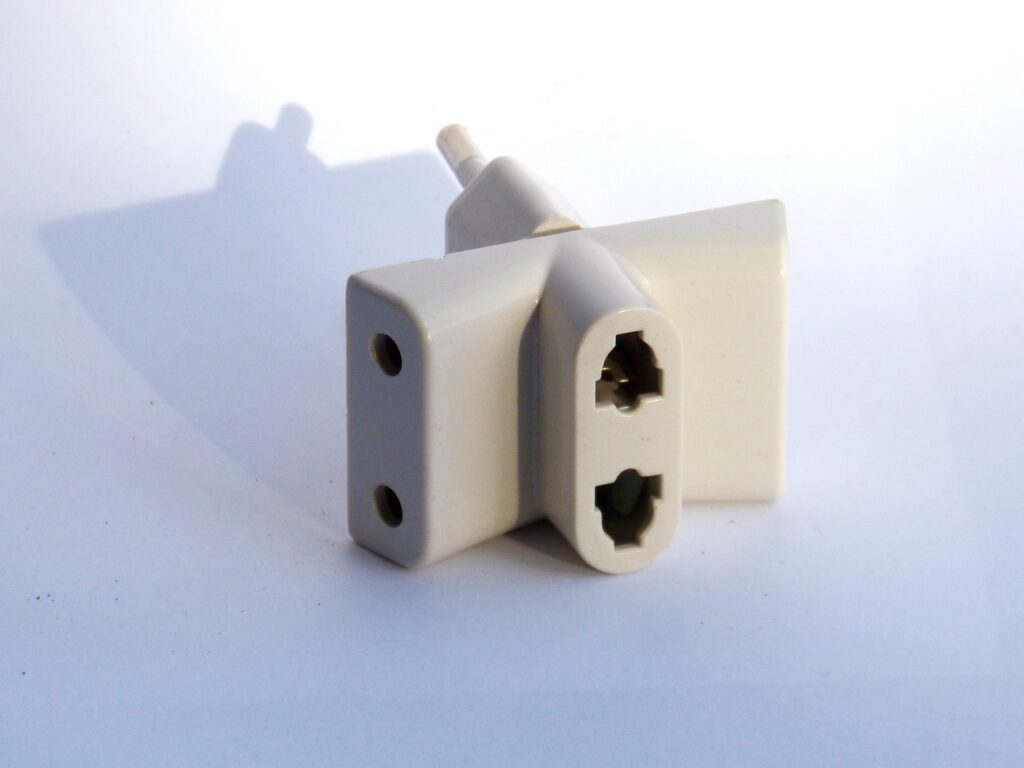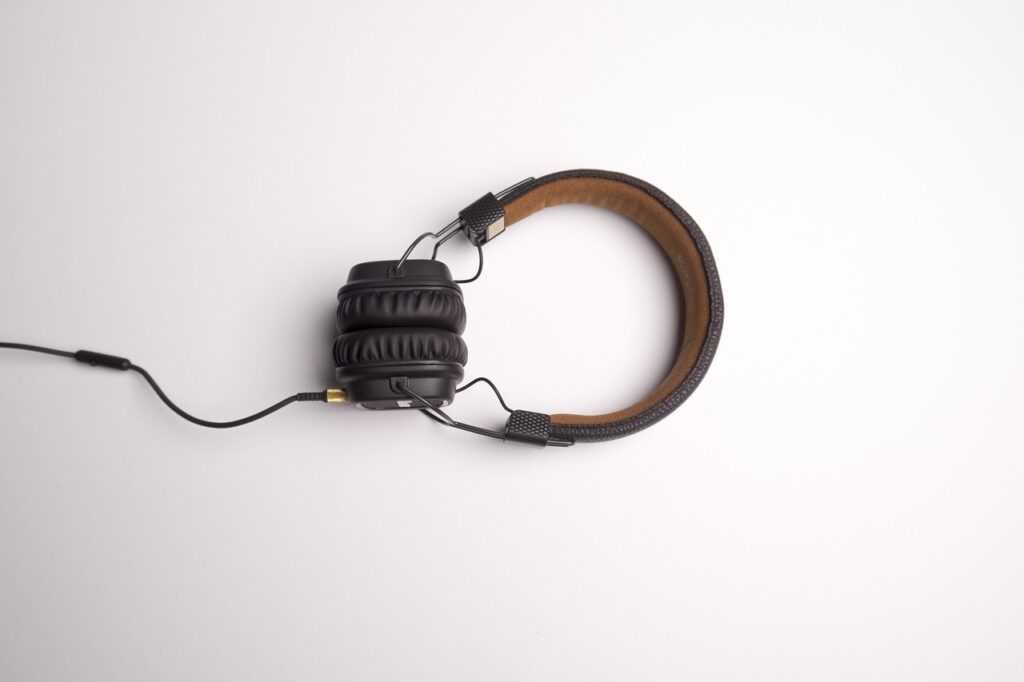Hidden Gems of South Osaka
Top photo by yocchan777 on PhotoAC
Welcome to Southern Osaka Prefecture, a captivating region brimming with natural beauty, rich cultural heritage, and unique attractions waiting to be discovered. While Osaka is renowned for its bustling cityscapes and vibrant street food scenes, venturing beyond the city limits unveils a tranquil and offbeat side of Japan that is often overlooked by travelers.
Join us on a journey to explore the captivating charms of Southern Osaka Prefecture, where ancient treasures, serene landscapes, and authentic cultural experiences await.
Marvel at Sakai’s Ancient Treasures
Sakai, known for its ancient history and traditional craftsmanship, offers a glimpse into Japan’s rich cultural heritage. Start your exploration by visiting the Mozu-Furuichi Kofungun, a UNESCO World Heritage site. These burial mounds, dating back to the 4th and 5th centuries, are among the largest in Japan. Marvel at the sheer size and grandeur of these tombs, which provide valuable insights into the rituals and beliefs of ancient Japanese society. Afterward, take a leisurely stroll through Daisen Park, a picturesque oasis in the heart of Sakai.
Admire the well-manicured gardens and tranquil ponds as you make your way to the Sakai City Museum of History. This museum offers a fascinating collection of artifacts, including ancient pottery, tools, and historical documents, showcasing the city’s rich past. While at the museum, immerse yourself in the serenity of a traditional tea ceremony, where skilled tea masters demonstrate the artistry and grace of this centuries-old Japanese tradition.
Discover the Serenity of Kishiwada
Escape to the charming city of Kishiwada, where you can experience a blend of history, culture, and vibrant festivals. Begin your journey at Kishiwada Castle, a majestic fortress that dates back to the 16th century. Climb to the top of the castle’s tower for panoramic views of the city and learn about its historical significance.
If you’re fortunate enough to visit during one of Kishiwada’s festivals, such as the Kishiwada Danjiri Matsuri, you’re in for a lively and colorful spectacle. Witness the breathtaking sight of locals pulling massive wooden floats through the streets, accompanied by traditional music and exuberant celebrations. This annual event showcases the city’s vibrant culture and community spirit.
Wander through Sakaihama Beach Park
For a peaceful retreat near the coast, head to Sakaihama Beach Park in Hannan. This hidden gem offers stunning views of the ocean and a serene atmosphere away from the city’s hustle and bustle. Take a leisurely stroll along the sandy beaches, breathe in the fresh sea air, and enjoy the calming sound of waves crashing on the shore.
The park also features walking trails that wind through lush greenery, perfect for nature lovers and avid hikers. If you’re lucky, you may spot a variety of bird species that call the park their home. Pack a picnic and relax on the grassy knolls, or simply find a quiet spot to soak up the sun and embrace the tranquil surroundings.
Experience Cultural Heritage in Izumisano
Immerse yourself in Japanese culture and modern entertainment in Izumisano’s Rinku Town. Begin your adventure at the Rinku Premium Outlets, a shopping paradise offering a wide range of domestic and international brands at discounted prices. Indulge in some retail therapy and find great deals on fashion, accessories, and more.
Continue your exploration at Rinku Pleasure Town Seacle, an entertainment complex located nearby. Here, you’ll find an array of shops, restaurants, and amusement facilities to keep you entertained. Don’t miss the opportunity to visit the observatory of the Rinku Gate Tower Building, offering breathtaking views of Osaka Bay and the surrounding area. Capture the perfect panoramic photo and soak in the stunning vistas.
Explore the Oenological Wonders of Katsunuma
Venture into the hills of Southern Osaka Prefecture to Katsunuma, a region renowned for its vineyards and wineries. Begin your wine adventure with a visit to Katsunuma Winery, where you can learn about the wine-making process and sample a variety of locally produced wines. Explore the vineyards, especially during autumn when the foliage transforms into a breathtaking palette of red, orange, and gold.
To deepen your understanding of wine culture, consider participating in a guided tour that takes you through the vineyards and provides insights into the region’s viticulture. You may even have the opportunity to engage in grape picking and experience the harvest season firsthand. Don’t forget to visit local wine cellars and shops, where you can purchase bottles of wine to enjoy as a memento of your visit.
Discover Japanese History at Sumiyoshi Taisha
No visit to southern Osaka would be complete without a visit to Sumiyoshi Taisha, one of Japan’s oldest and most important Shinto shrines. Located in the Sumiyoshi ward of Osaka, this iconic shrine features unique architecture characterized by its curved roofs and lack of verandas. Upon entering the shrine grounds, you’ll be greeted by the iconic Taiko Bridge, which symbolizes the transition from the mundane to the sacred. Take your time to explore the serene atmosphere and wander through the tranquil gardens. Admire the intricate details of the shrine’s structures and discover the spiritual significance behind various rituals and ceremonies.
Sumiyoshi Taisha hosts several festivals throughout the year, including the Sumiyoshi Festival in July, which showcases lively processions, traditional performances, and a vibrant atmosphere. Immerse yourself in the local culture and witness the vibrant traditions that have been celebrated for centuries.
From the ancient burial mounds of Sakai to the serene coastal retreats of Hannan, the region’s diverse landscapes provide a respite from the urban bustle. Immerse yourself in the rich historical heritage of Kishiwada and witness the vibrancy of its festivals. Seek tranquility and picturesque beauty at Sakaihama Beach Park, where the gentle waves and walking trails invite moments of reflection. Dive into the cultural fusion of Izumisano’s Rinku Town and savor its captivating views. Indulge in the art of winemaking and the oenological delights of Katsunuma. Finally, discover the spiritual significance and architectural beauty of Sumiyoshi Taisha.
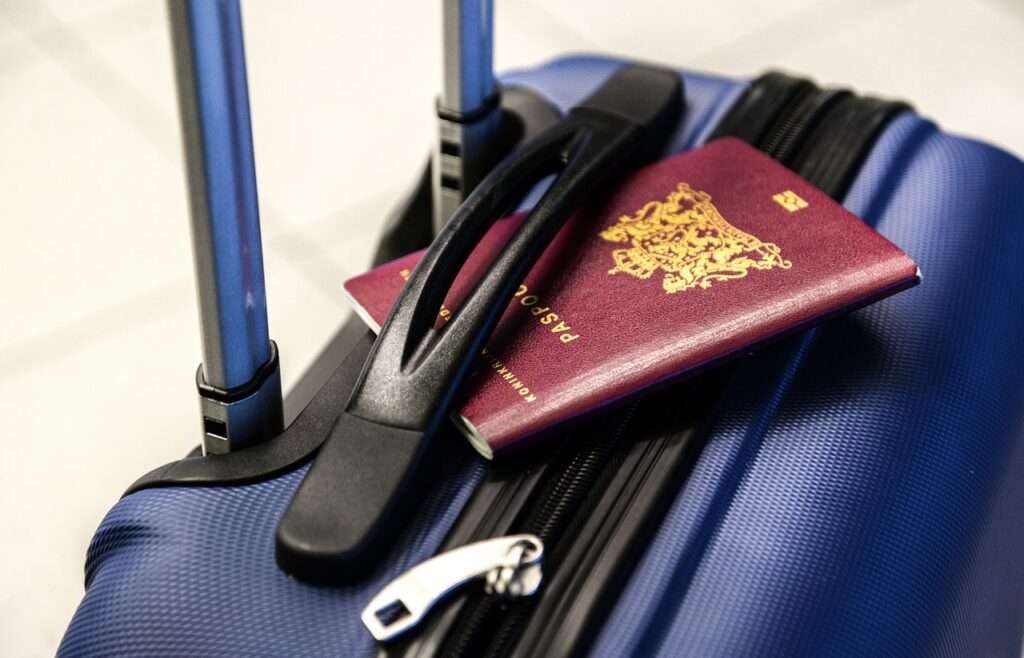
Image by Skitterphoto via Pixabay
So you’ve gotten your entry visa, your flight/boat/teleporter to Japan is booked, and
you’re probably counting down the days before you touch down. These are exciting
times, but while you’re packing your things, there are some items I would recommend
which can make the process of moving to and setting up in Japan smoother.
Today, I will list 3 things that will undoubtedly come in useful whether you’re coming
for one year or one hundred!
1. Plug adapters
These have a variety of names depending on the country, but what I’m referring to are
adapters to allow your home country’s plugs to work with the sockets found here in
Japan. You can search “(your country) Japan plug adapter” on Amazon to find packs of
5 or 10 for the price of a fast-food meal. Once you get off the flight and into your
lodgings, you’ll likely be running low on battery and you don’t want to stump up a nice
shiny 1000 yen note for a paltry one or two adapters from the local conbini.
Regarding voltage, most if not all smartphone chargers made today can take from 100
to 240 volts at 50 or 60 hertz making them usable anywhere in the world, including
Japan of course. If you’re bringing any household appliances, please be careful. Japan’s
power grid yields a 110v output, with 50 hertz for Eastern Japan and 60 hertz for
Western Japan. This means your appliances from home are unlikely to work in Japan,
and if plugged in, could be dangerous. I would recommend leaving these at home and
getting new ones in your town in Japan to ensure they’ll work, but if you spent an arm
on a leg on a hair straightener, you could invest in a step up or step down transformer.
2. ANC Headphones
Traveling can leave your brain fried, so when you get on the plane, you may want to
unwind with music, a podcast, or even catch some shut-eye. However, the chattering
of passengers around you could potentially foil your plans to snooze through this
whole plane ride. To remedy this, I recommend investing in a pair of Active Noise
Cancelling headphones. They use small microphones to pick up low range sounds, and
generate inverse noise to make your surroundings whisper quiet. It’s quite an eerie
experience the first time! They aren’t always effective against people talking, but they
are excellent for drowning out the low rumble of a bus or aircraft engine.
ANC headphones can be pricey, but I personally feel it would be worth the investment,
particularly should you have a long haul flight coming up. There are some strong
budget options these days from the likes of Anker or 1MORE that do 90% of what the
big brands can do! Should you be considering these, I recommend researching locally
available options in your price range.

Image by Alexas_Fotos via Pixabay
3. Some comforts from home
Moving country is not a task for the faint of heart, and pat yourself on the back for
undertaking something very few people do! New places can be exciting, but there’s no
shame in feeling homesick from time to time. Local snacks, favourite stuffed toys and
anything unique to your town or city are nice mementos to bring and can make for
good talking points with your new Japanese friends.
One thing I’d recommend is a photo book, a physical one. These can be ordered online
where the company will package and design it all nicely, and ship it out to you. You
could even make a day of it picking out favourite snaps with family or friends. It’s nice
to look back on pleasant memories, from a physical book as opposed to your phone
screen.
These are more generalised recommendations, so I would also invite you, the reader
to consider your specific needs about what you want to bring with you to Japan. It’s
worth taking the time to prepare now so you can get it done and dusted, and focus on
getting excited to finally arrive in the land of the rising sun!
Photo Credits:
Additional Photos by Skitterphoto , makamuki0 , Pexels & Alexas_Fotos via Pixabay used under the Pixabay License.
All other content (text) created by the original author and © 2023 MUSUBI by Borderlink
The Japanese culinary scene is one I was unprepared for when I first arrived several years ago. Personally, growing up in the American Midwest, I was not surprised to find beef less prevalent, it was something I’d had an abundance of time to prepare for. But something I had not considered, was the cultural shift in how restaurants functioned.
The variety of ways that different restaurants function in Japan is a marvel in and of itself, but one that’s achieved some infamy abroad is the kaitenzushi or, as it was introduced to me, Conveyor Belt Sushi. They are eponymous within Japan, and understanding the rules behind how they work is incredibly important.
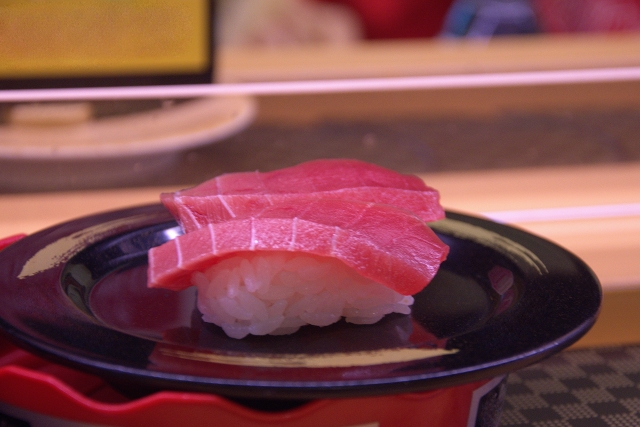
Photo by 百和
Eating out with friends is a staple of Japanese culture. Inviting others over to your house is a less common event, as often houses are seen as very private places, for family. As such, inviting friends and coworkers to restaurants, after working hours, is a popular pastime. While kaitenzushi isn’t a common place to go with coworkers, it is very common for families, and, for groups of foreign workers. For the latter, some of which is the spectacle factor, in that it is shockingly different from anything we’re used to.
Similarly, they are very similar in speed and convenience to fast food restaurants in other countries, although they can lack the ability to order take out. Understanding the why such culture is important, leads us to the following questions, of how they are different from what is more familiar to a foreigner.
So, you enter a kaitenzushi restaurant, you’re (usually) sat down at a table, or bar. What does it look like?
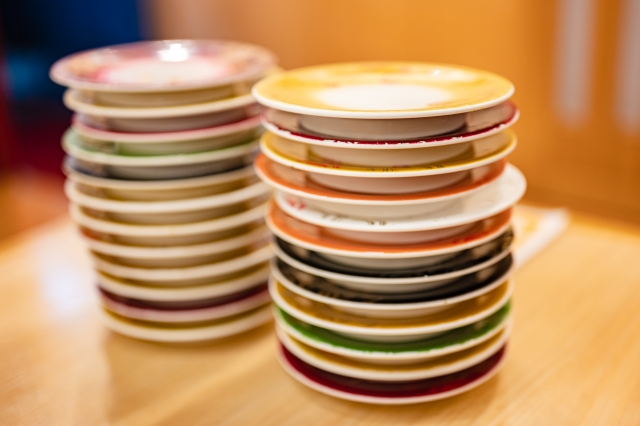
Photo by YUTO@PHOTOGRAPHER
It’s important to recognize that not all restaurants will look exactly like this, but this is the first one I saw, and was incredibly confused! I was in a booth, and on the right side I had a computer screen, on the table below these belts, one conveyor belt constantly going by with plates of sushi, and an empty belt above it. The belt in the image isn’t empty, but we’ll come back to that! The lower belt will have many different plates, including drinks like juices.
And, quite simply, should you see something on the belt that you’d like to eat, you reach out and take the plate. No waitress, no order required. It can feel strangely empowering your first time, the immediate gratification of seeing something that looks good, to eating it. But, most importantly, do not put that plate back on the belt, once you’ve eaten it! Keep the empty plate in front of you, as that will be helpful in calculating your bill.
The computer screen used at many restaurants of this type, can be used to place orders for types of sushi you may not see on the belt, as well as drinks or alcohol that a restaurant wouldn’t want to be as easily accessible. In one like the above, those plates of sushi would come right out to your table on a train, again, as in the image above! Should your restaurant lack a second rail, usually a member of the waitstaff will bring it out to serve you. Again, keep any and all plates on your table, for bill calculations.
Typically, at the end of the night, a member of the waitstaff will approach you (or can be called via the computer screen, or in some cases a small button on your table) and ask if you’re done. They will then calculate your bill, by the plates in front of you. Usually, the color or pattern of each plate determines the cost of the dish. This will then result in a bill given to you. Lastly, again in most cases, you will bring that bill up to the counter at the entrance of the restaurant to pay before departing, successful in your first outing!
Personally, I find the first visit to a kaitenzushi restaurant to be a bit of a rite of passage for many foreigners. It’s certainly not the most difficult, nor even would I think, the most intriguing style of restaurant, but given how they tend to show up on many travel programs, and the peculiar nature with which food is delivered, they’re often quite eye-catching. They also often serve as an introduction to Sushi for many foreigners, which, in my experience, served as a particularly potent method of conversion into helping others develop a love of sushi.
Photo Credits:
Additional Photos by 百和 and YUTO@PHOTOGRAPHER
All other content (text) created by the original author and © 2023 MUSUBI by Borderlink
Learning Japanese in Japan as a complete beginner may present additional challenges, but it is still possible to make progress in your language learning journey. It can be tempting to jump into the world of language learning by just diving into the vast number of resources provided by the world wide web.
However, in some cases it can be completely overwhelming about where to start, what level am I? Am I a beginner, intermediate, upper-intermediate level? Should I just start watching anime without any subtitles and try and write down any words that I don’t know?
All of these questions are valid and important to be able to get the most out of your language learning journey. Here we will talk about some tips to get you going on your journey of learning Japanese.
Before diving into Japanese language learning, take some time to assess your goals and learning style. Are you aiming to achieve conversational fluency or focusing on reading and writing? Understanding your objectives will help you tailor your study plan accordingly.
Additionally, identify your preferred learning style, whether it’s visual, auditory, or kinesthetic, to choose appropriate resources and study techniques that align with your strengths. Hiragana and Katakana are the two essential phonetic scripts in Japanese. Mastering these early on will greatly benefit your language learning journey. Start by memorizing the characters and practicing their stroke order. There are various resources available, including books and physical flashcards, to help you learn and reinforce them.
By gaining proficiency in Hiragana and Katakana, you’ll be able to read and pronounce Japanese words accurately. A beginner’s textbook is an excellent resource to provide structure and guidance in your language learning journey. Look for textbooks specifically designed for self-study or classroom use, which offer comprehensive lessons, grammar explanations, vocabulary, and exercises.
My personal recommendations are the Genki I&II textbooks for beginners and Tobira if you have finished those or for the upper-beginner, lower intermediate. These textbooks often come with accompanying audio materials, allowing you to practice listening and pronunciation skills. Choose a textbook that suits your learning style and complements your goals.
Engaging in language exchange with native Japanese speakers is a valuable way to practice speaking and improve your conversational skills. Search for language exchange programs, conversation partners, or language exchange events in your local community or through bulletin boards at universities or community centers.
It’s also a great idea to get to know your fellow teachers better by talking with them in Japanese. It’s a great way to practice and a great way to understand your school environment better. Interacting with native speakers will not only enhance your language skills but also provide cultural insights and create meaningful connections.
Being in Japan provides a unique advantage for people wanting to learn Japanese. Immerse yourself in Japanese culture by exploring local customs, traditions, and activities. Attend cultural festivals, visit museums, and try local cuisine. By immersing yourself in the culture, you’ll gain a deeper understanding of the language and its context.
Additionally, practicing your language skills in real-life situations will boost your confidence and comprehension. Things as small as going to a department store and asking staff in Japanese what you’re looking for goes a long way in cementing the vocabulary and grammar that you use.
Consistency is key when learning a new language. Set aside dedicated time each day to study and practice Japanese. Create a study schedule that works for you, whether it’s in the morning, during lunch breaks, or in the evening. Utilize your textbook, online resources, or language exchange partners to practice reading, writing, listening, and speaking skills.
Even short daily sessions can lead to significant progress over time. There is a wonderful Japanese phrase that I often use when talking with my students about learning English and it holds true with just about anything.
塵(ちり)も積(つ)もれば山(やま)となる
Even dust when piled up becomes a mountain. Look for local study groups or language learning communities in your area. These groups often consist of fellow learners who are also passionate about learning Japanese. Joining these study groups provides an opportunity to practice with peers, ask questions, and share resources and learning strategies. Collaborating with others can enhance motivation and create a supportive environment for your language learning journey.
Starting your journey to learn Japanese in Japan as a complete beginner requires careful planning and a structured approach. By assessing your goals, learning style, and utilizing resources such as textbooks, language exchange opportunities, and local study groups, you can build a strong foundation in the language.
Immerse yourself in Japanese culture, practice daily, and stay committed to your language learning goals. With time and dedication, you’ll make steady progress and find yourself on a rewarding path to Japanese language fluency.
Photo Credits:
All other content (text) created by the original author and © 2023 MUSUBI by Borderlink
What is heat exhaustion and heatstroke?
With Japanese summer comes hot and humid weather. This weather can be very dangerous at times, occasionally reaching 40°C in some areas across Japan, with humidity regularly above 50%. For those not used to the heat, this can be dangerous. It is also dangerous to the elderly, those with high blood pressure and those who regularly work in a hot environment.
Every year there have been hospitalities and fatalities from these heat related illnesses, so knowing the signs and when to act is paramount – else you or a colleague could become a victim.
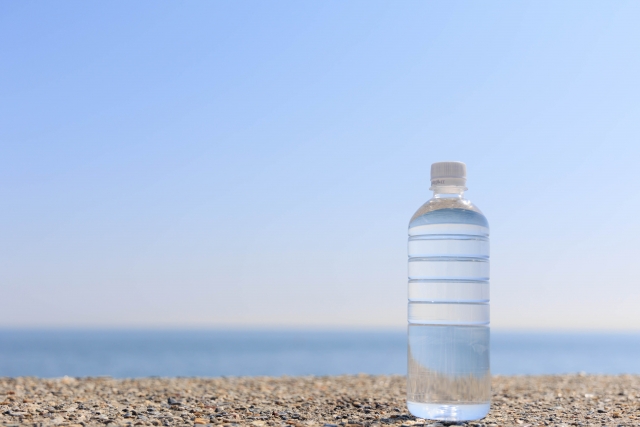
Photo by TAKASANshot
Symptoms and Treatment
Heatstroke is an illness when the body can no longer control its temperature – the sweating mechanism fails, and the body is no longer able to cool down. Heatstroke is accompanied by excessive sweating and pale skin (a change in skin colour can be harder to see in black and brown skin), or a heat rash. On top of this, muscle cramps are also reportedly common in heatstroke victims.
Heat exhaustion is the body’s response to excessive salt and water loss. It has very similar symptoms to heatstroke including nausea, dizziness, weakness, and irritability.
If you notice any of these signs in yourself or your colleagues, evacuate that person to a cool environment and give liquids to drink. Some unnecessary clothing like socks and shoes – most heat is lost through the feet – and give cold compresses or place a cool damp towel on the forehead of the injured party. For heatstroke, it is necessary to act with haste because if left untreated it can be fatal.
Emergency services will be required if the injured party does not cool down within 30 minutes. The emergency services in Japan can be called at 119 for medical emergency services. If this happens at the coast, call either 118 (Coast Guard) or 119 (Ambulance).
Day to Day Precautions
Remember to always drink and stay hydrated. Bring a thermal flask or water bottle to school and take regular sips. When going outside in the heat it is best to wear thin layers in clothing or short sleeve. For anyone at work, you can roll up your sleeves and start wearing “cool biz” business clothing. Staying inside in a cool place on your break or taking regular trips to shaded areas in the playground when playing with students is also a good option.
In your house you can use the air conditioning “冷房 (reibou)” cooling setting to bring the temperature of your room significantly. Another option is to buy an electric fan, or one that can plug into your laptop or desktop.

Photo by syakariki
Conclusion
In conclusion, it is best to take precaution against heat stroke and to drink a lot of liquids throughout the day. Heat stroke can be fatal if left too late and must be dealt with as soon as it is found. This article should be helpful for anyone trying to find measures and precaution against the intense summer heat of Japan – particularly newcomers into teaching and the office.
Photo & Information Credits:
Additional photos by TAKASANshot and syakariki
Articles Cited:
All other content (text) created by the original author and © 2023 MUSUBI by Borderlink
Hello, I am Sabina Maharjan from Nepal. I have been living here in Japan since 2019. I came here with my 6 months old son. At first when I came to Japan I only had fear but as the time passed on I was able to overcome my fear and risen up my confidence. I realized that my fear was due to my own language barrier with zero level of Japanese language. Now I would like to share some of my personal experiences of two different countries food.
There are a lot of restaurants across Japan. Food lovers would definitely love it to give their taste buds something unique flavor.
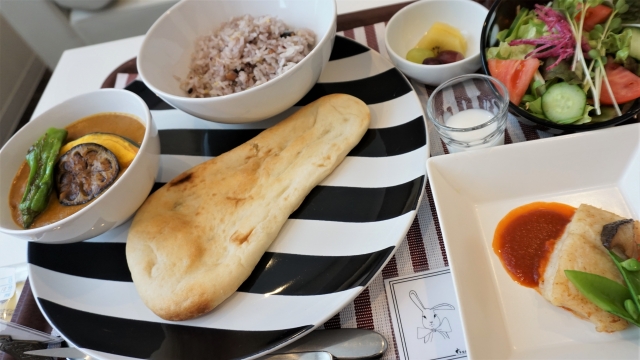
Photo by おこめっこ
Curry (Nepal) & Curry (Japan)
For me it was not so easy to go around and try different taste of Japanese food. As you can see from the picture above there is vast different in Nepalese food and Japanese food although rice is the main dish. The ingredients used for cooking curry are same but the process and use of spices are very different.
Not only that, I am also a vegetarian but one best part of me is that I love cooking so I usually cook various cuisine at my kitchen and enjoy sharing with my family and friends. I have tried some of the Japanese foods like dorayaki, udon, miso soup, ramen and some sweets & bread.
WO (Lentils pancake of Nepal) & Dorayaki (beans pancake of Japan)
WO is made from various types of lentils but most popular one is made from black lentils (Maas daal) and green lentils (Moong Daal). This is one of my favorite because it’s healthy and quick to prepare. It is mostly prepared in every festival and occasion in our community when we invite our guest and relatives at our home.
You can also enjoy different flavor of Wo by adding some different ingredients like, coriander leaves, asparagus, chopped onions, meat that you like, eggs, chopped green chilies, and so on. Plain Wo without any of these ingredients also taste delicious.
I have also eaten Dorayaki many times here in japan. It’s soft, sweet and healthy Japanese pan cake. My kids love to eat it. Actually it is loved by all gender of all ages. You can buy Dorayaki in all convenience store, Seiyu, Donki and other local Japanese sweets shop. It is also reasonable when you think of its cost. But I haven’t tried to cook Dorayaki in my kitchen. I want to try it in my kitchen too.
Tea (in Nepal) and Tea (in Japan)
The word tea sounds so simple but do you fine it friendly too? For me it is yes. Actually to honor our guest we serve them with tea. Tea is the medium to start up your chatting and sharing of ideas too. But now a day, people are more concerned about their health and they drink tea of different flavors.
Such as, black tea with various spices and herbs without sugar and also milk tea with various spices and herbs without sugar. It is said that sugar strictly kills the original taste of tea and also not good for your health as well. They add spices like cloves, black pepper, cardamom, ginger, bay leaf, cinnamon, etc. We can also add some herbs like basils, mint, saffron, lavender, rose marry, lemon grass, dill, etc.
It’s a culture in Japan that when you go to any restaurant and order dinner then you will be served your dinner along with green tea. Even when you go at someone’s house, they will welcome you with some green tea. It’s not only culture but also respect to someone (guest). Green tea has numerous health benefits. Such as, burns fats, increases metabolism, helps lowering blood sugar, prevent heart diseases, boost up immunity, and many more. I personally love drinking green tea because of its health benefits and its taste (mouth watering).
Lastly I want to say that wherever you go try to understand the nature of there. Adopt yourself with the change in environment not only seasons. Understand the living and culture where you are. Always make yourself easy, comfortable and visionary. “Laughter is the brightest in the place where food is good” by Irish proverb.
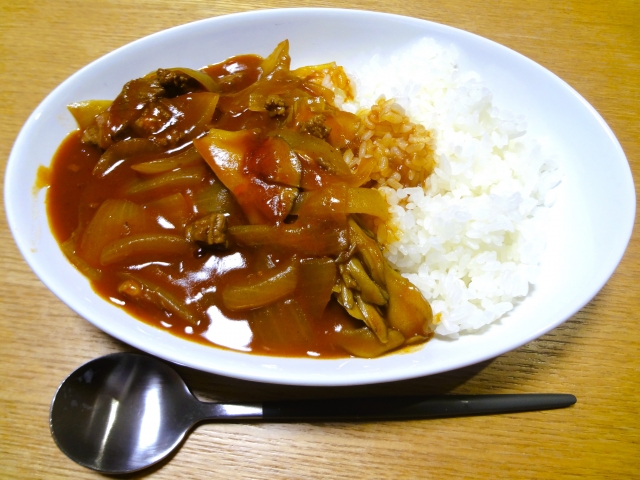
Photo by リュウキ
Photo Credits:
Additional Photos by リュウキ & おこめっこ
All other content (text) created by the original author and © 2023 MUSUBI by Borderlink
There are times after a long week at work and all you want to do is relax in a bath and let all your stress wash away. However, the “bath” in your apartment is so small, you pretty much must asian squat to fit into it, or the nearby onsen is crowded because it’s Friday or it’s a bit on the expensive side. So, the answer to this, could be a visit to your local sento (銭湯).
A sento (sometimes referred to “yuya” (湯屋) and “furoya” (風呂屋) ) can be a lot like an onsen, it can have baths with different temperatures, a sauna, towel rental and drinks and ice cream for afterwards. However, they are smaller as they are aimed at servicing the local community. Which can mean they are cheaper! Also, onsens are governed by the Onsen Laws of Japan and have many conditions that must meet before they can be called an onsen. Plus, they usually use water from a nearby hot spring, while a sento doesn’t.
Like an onsen, sentos have separate sections for men and women.Change rooms are usually fairly basic with a locker to put your clothes in and there are hair dryers available. You shower before using the bath and shampoo and body soap are supplied. You will see regulars who have small baskets full of products they like to bring with them; personal shampoos, facial scrubs, face masks, etc.
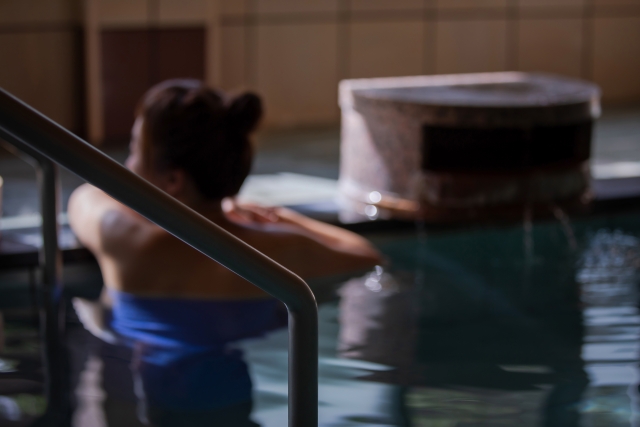
Photo by FineGraphics
Sentos are often small but can have a lot of charm about them. In about 1968, there were about 18,000 sentos across Japan, sadly their popularity is on the decline. In 2020, it was reported less than 500 remained in the Tokyo area alone. However, this decline has seen some sentos come up with fun ways to lure customers back in.
Refurbishments are obviously a great way, as no one wants to bath in an old run down sento. Naoshima bath has been transformed into a work of art. The exterior and interior are decorated with mosaic, wall murals and ceramics. It’s become a local tourist attraction, so much so, that tourist have to be reminded not to be too noisy when arriving or leaving at the bathhouse. Just be aware that sometimes tourist will get charged a higher entrance fee than locals at Naoshima. Kariyou-yu in Shibuya has been updated to a sleek modern design, that you wouldn’t realise it was founded in 1916. It has an assortment of baths at different temperatures and even a carbonated bath.
Other sentos have branched out into merchandise. Selling not just shampoos and body soaps but also towels, sauna accessories and clothing all branded to the sento itself. Umeyu in Kyoto even has its own website dedicated to selling t-shirts, socks, towels, etc. https://youkiyu.stores.jp/ For people who want to check it out. A lot have also expanded to social media, like twitter and Instagram, to help sell merchandise, let customers know about opening hours and even events. Yes, events. Want to hold a live music event at your local sento? Places like Umeyu will hold live music for an evening in the bath house.
Other sentos have combined to create stamp rallies to encourage people to visit various sentos in their area. Taito Ward in Tokyo had a stamp rally in 2022 to help promote local sentos. You had to visit each sento in the ward and then return to your favourite again to collect 20 stamps. If you collected them all you were eligible to win prizes.
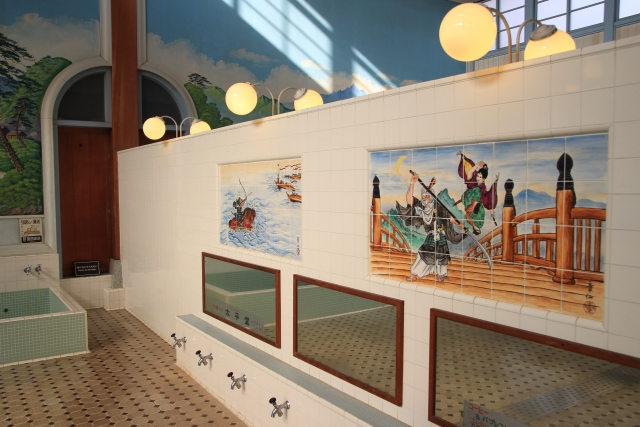
Photo by おがさわら
Most prices range from 400 yen to 700 yen, depending on the area and popularity of the sento. Some sento are even tattoo friendly! So, after a long hard work week, why not go down to your local sento and have a relaxing bath. Who knows you might get lucky and have the entire place to yourself!
Photo Credits:
Additional Photos by FineGraphics , おがさわら
All other content (text) created by the original author and © 2023 MUSUBI by Borderlink
Japan is known for its unique cuisine that incorporates fresh seafood, rice, noodles, pickled vegetables, and other classic dishes. But beyond the famous sushi rolls and ramen bowls, there are many lesser-known regional foods that make Japan’s culinary landscape so diverse and fascinating.
In the northern island of Hokkaido, the harsh winter climate has inspired hearty and warming dishes like soup curry, a spicy soup with chunks of meat and vegetables, and Jingisukan, a grill dish of lamb or mutton seasoned with soy sauce and garlic. Hokkaido is also famous for its milk and dairy products, like rich ice cream and buttery cheese.
Moving down to the Kansai region, which includes the cities of Osaka and Kyoto, you can find classic dishes like takoyaki (octopus balls), okonomiyaki (savory pancakes), and kushikatsu (deep-fried skewers). Kansai is also known for its high-quality wagyu beef, which is often grilled teppanyaki-style and served with a variety of dipping sauces.
Another fascinating aspect of Japan’s food culture is its incorporation of international flavors and ingredients. For example, in recent years there has been a surge in Ghanaian restaurants in Tokyo, serving dishes like jollof rice, fufu with soup, and plantain chips. Japanese chefs have also been experimenting with using Ghanaian spices and ingredients in their own dishes, like adding yam powder to tempura batter or using palm oil in fried rice.
One example of this fusion is Yendokasai, a Ghanaian-Japanese restaurant in the Nakano neighborhood of Tokyo. The name means “gather around the table” in both Ghanaian and Japanese, emphasizing the restaurant’s focus on bringing people together through food. They serve dishes like mackerel grilled with spicy shito sauce, jollof rice with chicken and vegetables, and a fish stew with plantain dumplings.
In conclusion, Japan’s food culture is rich and diverse, with regional specialties and international influences adding to the mix. Whether you’re trying classic dishes like sushi and ramen, or venturing into lesser-known territory like soup curry or Ghanaian cuisine, there is always something new and exciting to discover in Japan’s culinary scene.
Photo Credits:
All other content (text) created by the original author and © 2023 MUSUBI by Borderlink

